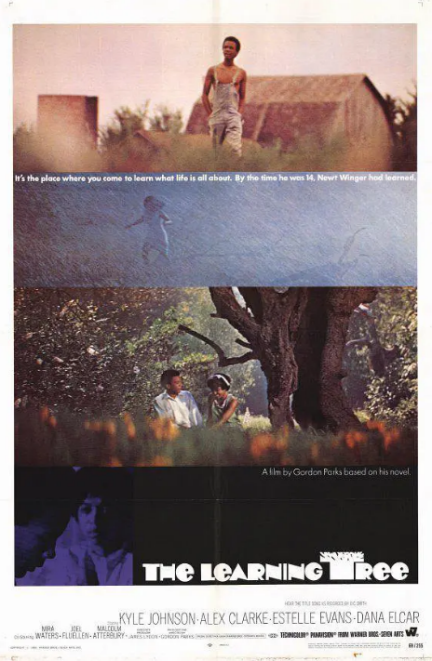
当前课程知识点:英语电影与文化 > Unit 12 The English Patient: Critical Analysis > Unit 12 The English Patient: Critical Analysis > Unit 8 Film and Race

Despite inequalities and discrimination, a thriving black cinema existed in New York’s Harem district during the 1930s and 1940s. Usually bankrolled by white business executives who were capitalizing on the black-only theaters fostered by segregation, independent films featuring black casts were supported by African American moviegoers, even during the Depression. But it was a popular Hollywood film, Imitation of Life (1934), that emerged as the highest-grossing film in black theaters during the mid-1930s. The film told the story of a friendship between a white woman and a black woman whose young daughter denied her heritage and passed for white, breaking her mother’s heart. Despite African Americans’ long support of the film industry, their moviegoing experience has not been the same as that of whites. From the late 1800s until the passage of Civil Rights legislation in the mid-1960s, many theater owners discriminated against black patrons. In large cities, blacks often had to attend separate theaters where new movies might not appear until a year or two after white theaters had shown them. In smaller towns and in the South, blacks were often only allowed to patronize local theaters after midnight. In addition, some theater managers required black patrons to sit in less desirable areas of the theater.
Changes took place during and after World War II, however. When the “white fight” from central cities began during the suburbanization of the 1950s, many downtown and neighborhood theaters began catering to black customers in order to keep from going out of business. By the late 1960s and early 1970s, these theaters had become major venues for popular commercial films, even featuring a few movies about African Americans, including Guess Who’s Coming to Dinner? (1967), In the Heat of the Night (1967), The Learning Tree (1969), and Sounder (1972).
Based on the popularity of these films, black photographer-turned-filmmaker Gordon Parks, who directed The Learning Tree (adapted from his own novel, went on to make commercial action/adventure films, including Shaft (1971), remade by John Singleton in 2000). Popular in urban theaters, especially among black teenagers, the movies produced by Parks and his son—Gordon Parks Jr. (Super Fly, 1972)—spawned a number of commercial imitators, labeled blaxploitation movies. These films were the subject of heated cultural debates in the 1970s; like some rap songs today, they were both praised for their realistic depictions of black urban life and criticized for glorifying violence. Nevertheless, these films reinvigorated urban movie attendance, reaching an audience that had not been well served by the film industry until the 1960s.
Opportunities for black film directors have expanded since the 1980s and 1990s, although even now there is still debate about what kinds of African American representation should be on the screen. Lee Daniels received only the second Academy Award nomination for a black director for Precious: Based on the Novel “Push” by Sapphire in 2009 (first was John Singleton, for Boyz N the Hood in 1991). Precious, about an obese, illiterate, black teenager girl subjected to severe sexual and emotional abuse, was praised by many critics but decried by others who interpreted it as more Blaxploitation or “poverty porn”. Sapphire, the author of Push, the novel that inspired the film, defended the story. “With Michelle, Sasha and Malia and Obama in the White House and in the post-“Cosby Show” era, people can’t say these are the only images out there”, she said.
Excerpt from Richard Campell et al. Media & Culture: An Introduction to Mass Communication, 8th ed. (2012)
-1.1 Overview
--Video
-1.2 Mise-en-scène: setting
--Video
-1.3 Mise-en-scène: lighting
--Video
-1.4 Mise-en-scène: character appearance
--Video
-1.5 Mise-en-scène: performance
--Video
-1.6 Screen space and composition
--Video
-1.7 Case study
--Video
-Unit1 Questions for discussion
-Unit 1 单元测试
-2.1 Introduction of cinematography
--Video
-2.2 Cinematography: angle of framing
--Video
-2.3 Cinematography: camera distance
--Video
-2.4 Cinematography: mobile framing
--Video
-2.5 Case study
--Video
-Unit 2 Questions for discussion
-Unit 2 单元测试
-3.1 Overview
--Video
-3.2 Openings, closings, and story development
--Video
-3.3 Range of story information: restricted or unrestricted
--Video
-Unit 3 Questions for discussion
-Unit 3 单元测试
-4.1 Overview
--Video
-4.2 Editing and speed of narrative
--Video
-4.3 Chronology and continuity editing
--Video
-4.4 Flashbacks and editing
--Video
-Unit 4 Questions for Discussion
-Unit 4 单元测试
-5.1 Overview
--Video
-5.2 What is semiotics?
--Video
-5.3 Christian Metz
--Video
-5.4 Roland Barthes (Part 1)
--Video
-5.5 Roland Barthes (Part 2)
--Video
-5.6 Case study: 2001: A Space Odyssey
--Video
-Unit 5 Questions for Discussion
-Unit 5 单元测试
-6.1 Overview
--Video
-6.2 Origins of film ideology
--Video
-6.3 Media and technology
--Video
-6.4 Cultural hegemony and counterhegemony
--Video
-6.5 Case study: Star Trek
--Video
-Unit 6 Questions for discussion
-Unit 6 单元测试
-7.1 Overview
--Video
-7.2 Woman and film
--Video
-7.3 Feminist film theory and practice
--Video
-7.4 Case study: Three Billboards Outside Ebbing, Missouri
--Video
-7.5 Masculinity
--Video
-7.6 Queer Cinema
--Video
-Unit 7 Questions for discussion
-Unit 7 单元测试
-8.1 Overview
--Video
-8.2 Race and racism
--Video
-8.3 Stereotypes of racial representation
--Video
-8.4 Whiteness
--Video
-8.5 Case study: Rabbit-Proof Fence
--Video
-Unit 8 Questions for discussion
-Unit 8 单元测试
-9.1 Overview
--Video
-9.2 Edward Said and Orientalism
--Video
-9.3 Cultural Imperialism
--Video
-9.4 Self-orientation
--Video
-9.5 Case study I: Mulan
--Video
-9.6 Case study II: M Butterfly
--Video
-Unit 9 Questions for discussion
-Unit 9 单元测试
-10.1 Overview
--Video
-10.2 Early Background
--Video
-10.3 Jacques Lacan
--Video
-10.4 Laura Mulvey
--Video
-10.5 Case Study: Shutter Island
--Video
-Unit 10 Questions for discussion
-Unit 10 单元测试
-Unit 10 Film and Psychoanalysis
-11.1 Overview
--Video
-11.2 Story
--Video
-11.3 Character: the enigmatic English patient
--Video
-11.4 Mise-en-scène: setting
--Video
-11.5 Narrative
--Video
-11.6 Music
--Video
-Unit 11 Questions for discussion
-Unit 11 单元测试
-Unit 11 The English Patient: Form and Narrative
-12.1 Signs and Symbols
--Video
-12.2 Nationalism in The English Patient
--Video
-12.3 Almasy as the misogynist and Katharine as a feminist
--Video
-12.4 Kip as the Other
--Video
-Unit 12 Questions for discussion
-Unit 12 单元测试



